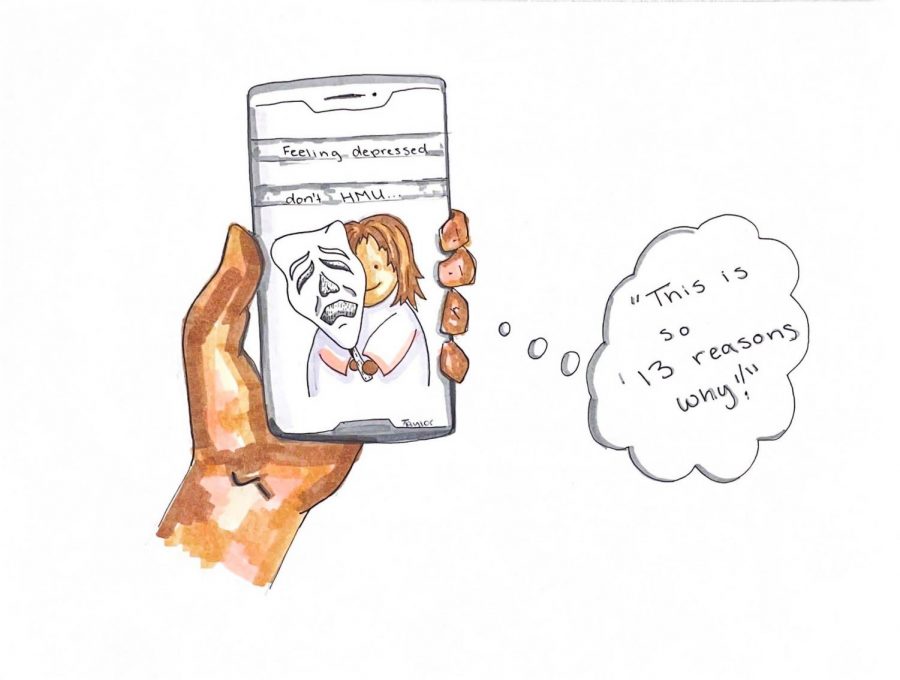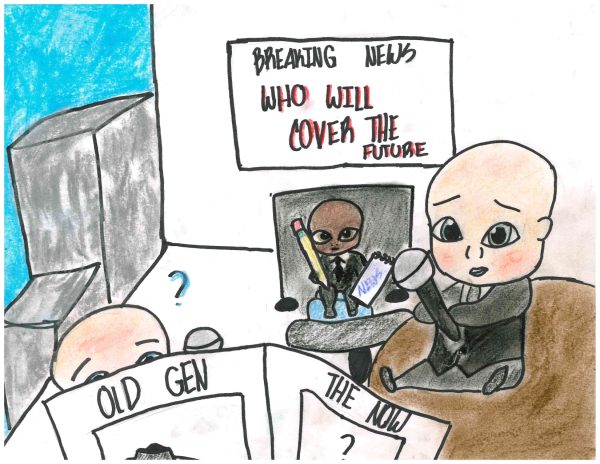The Way We See It: Entertainment inaccurately presents mental illness
In an attempt to bring light to the issues that teenagers with mental illnesses face, the film industry is producing an increasing amount of movies and TV shows centered around the topic. When handled without care, this type of media does more bad than good.
As mental health struggles become more normalized in film and TV, it is important that we look for accurate representation. Poor representation of the mentally ill in the media can be extremely damaging to today’s youth.
It almost seems that the goal in the industry is to end the stigma of mental health, yet Hollywood has just added more fuel to the fire with writing and production.
This trend in entertainment is not only disrespectful, but harmful to people who are actually facing their illnesses and being treated for them.
Most likely, writers and producers are striving for enticing, intriguing and daring content. But is that really more important than the stigma of mental illness?
Popularly streamed via Netflix, the TV series “13 Reasons Why” has become largely known for its controversial depiction of suicidal individuals. The main character Hannah Baker, played by actress Katherine Langford, creates cassette tapes to be played after her death.
Throughout the show, the viewer follows Baker through a sort of post-death revenge story, as each of the characters that are introduced get ahold of their tape. On this tape, Baker explains to the individual why they are responsible for her death.
The show was produced by singer Selena Gomez, who has spoken out about the portrayal of teen suicide in the show.
According to Rolling Stone, in an interview with Gomez she said “I feel like if this is what we are going to talk about, we might as well do it in a way that’s going to be honest [and] real.”
However, what was supposed to be “honest and real” was more of an inaccurate depiction of suicidal teens. Baker appears to be vengeful when creating the tapes, which is tremendously offensive to many people who have depression and struggle with suicidal thoughts.
This characterization is seen typically in entertainment, in other shows such as “American Horror Story” and the films like “Split.”
In the 2011 premier season of the popular anthology series “American Horror Story,” viewers meet the character Tate Langdon, played by actor Evan Peters.
Langdon is portrayed as an unstable teenager who, after dealing with familial stressors and his declining mental health, decides to commit a mass shooting at his high school.
Viewers meet Langdon as a ghost, long after he has committed this crime. Throughout the show, he expresses remorse, only after his love interest retracts her feelings for him, because of his previous actions.
The show pushes the narrative that, because he is conventionally attractive and mildly apologetic, Langdon is simply misunderstood and mentally ill; it seemingly attempts to normalize heinous crimes like this.
While there is no doubt that someone who commits this action is mentally ill to some degree, it is inappropriate to insinuate that his actions were unavoidable or in any ways typical for a depressed teenager.
But wait, there’s more. Poor representation of the mentally ill continues into 2016, with the movie “Split.” In this horror thriller film, the main character Kevin Wendell Crumb, who is also the antagonist, has dissociative identity disorder (DID).
Being that he kidnaps and harms three girls, the film is highly damaging to society’s perception of DID, a disorder that is often misunderstood and rarely educated about.
According to The Recovery Village, there are many misconceptions that the general public have about DID, including the idea that patients with this disorder are always as sporadic as Crumb and are easy to recognize as having DID.
“Researchers have found that on average a person will receive up to four incorrect diagnoses before being accurately diagnosed with dissociative identity disorder. A person may spend twelve or more years in the mental health system before this correct diagnosis is give.”.
While the film has captivated horror fans due to its gripping plot, it completely disregards people with DID and allows for watchers to form an evil connotation of the mental illness.
Believe it or not, accurate representation of mental illness does exist in the production industry, with films such as “To the Bone” or “Perks of Being a Wallflower.” The unfortunate truth is that the inaccurate depictions will, unfortunately, have the most views.
With this sensationalized approach to mental illness, we’re seeing more and more teens see these struggles as a trend, or something to emulate. Now more than ever, kids are taking to social media to put on a facade of depression, anxiety, etc. for clicks and likes.
As well, this character writing has ignited people to make jokes about mental health that inhibit the constructive conversation that people like Gomez thought that they could bring to the table.
The more that this misrepresentation continues, the more damage we are doing to today’s youth. This must be put to a stop. Sacrificing streams on shows and films is much more important than perpetuating this stigma.
It’s time for screenwriters and producers to take accountability and listen to the people affected by the disorders they use as cash-grabs. It’s time we see true representation and support from the media.
It’s time for change.






